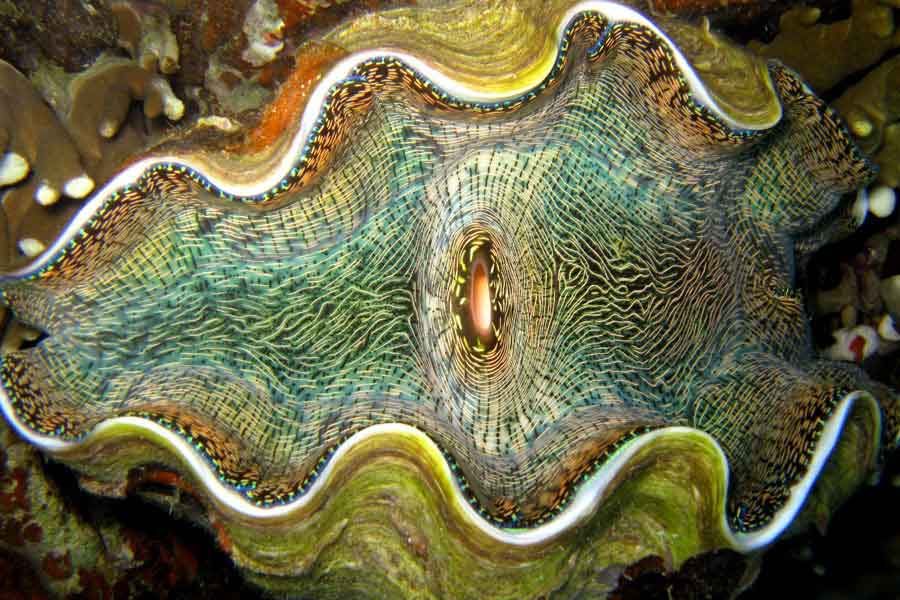
We have all heard the shocking story at some point of a swimmer whose arm or leg was preyed upon by a giant oyster, causing a slow and horrible death. But this story never actually happened.
Tridacnas are a species of giant oysters that can reach half a ton in weight and, like all giants, they are extremely slow to react. They close so slowly that it would be impossible for them to catch an unsuspecting swimmer or any kind of fish. Furthermore, if they did, the tridacna wouldn’t know what to do with it since its diet is far from carnivorous.
These types of giant oysters feed on a large amount of algae that grow inside them, protected by their mantle of blue flesh and the hardness of their shells. It could be said that the tridacna cultivates its own garden and protects it from predators. If we observe carefully, we can notice tiny shining dots on its violet flesh, which are microscopic lenses that allow sunlight to penetrate deeply into the tissues and illuminate the interior of the oyster, enabling unicellular plants to perform photosynthesis.
The small algae thrive inside the mollusk by producing substances that are directly transferred to its visceral mass through the bloodstream. In turn, the algae receive substances from the oyster that are useful to them, such as carbon dioxide, phosphates, and nitrates, which are waste products of the mollusks. Therefore, the algae also function as true excretory systems, converting the tridacnas’ waste into oxygen, carbohydrates, and fats.
The legend that names it the «man-eater» fails to mention that for years, the great oyster was a defenseless victim of humans. As a resident of shallow areas, it was easy for indigenous people of the South Pacific to reach and seek its tasty flesh. However, extracting a 500-kilogram tridacna from the water was a titanic task, so they simply descended with a knife and cut a piece of flesh from the live animal. The arrival of European civilization didn’t treat it much better, as evidenced by the large number of tridacna shells found in churches of the old world, converted into baptismal fonts. Today, they are a luxurious collectible item for those who never understood the beauty of such a peaceful creature.
«One cannot defend what one does not love, and one cannot love what one does not know.»

